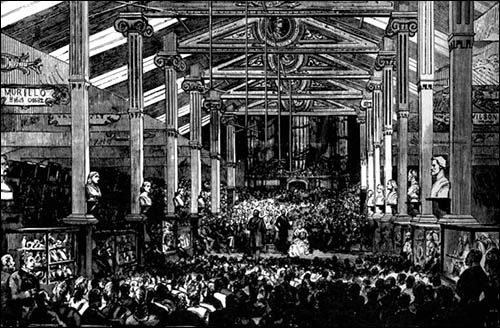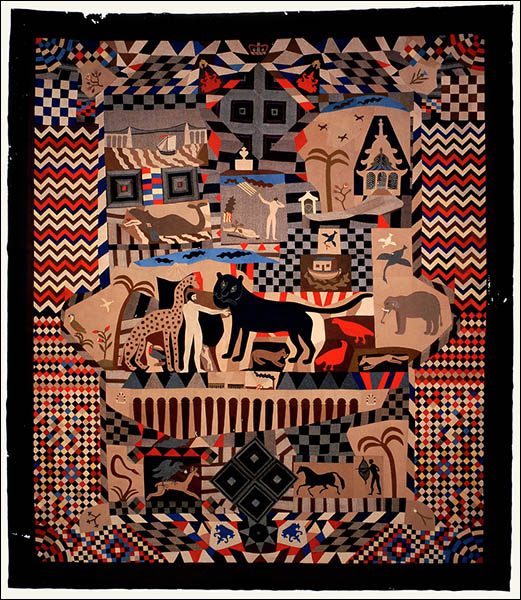The Argyle Arch, Hope Street, Wrexham
The archway connecting Hope Street to Argyle Street is part of Westminster Buildings, commissioned by Scottish engineer William Low (1814-86) as a dowry for his daughter Alison.
 He owned the Vron Colliery and was involved in the original plan to dig a railway tunnel under the English Channel. When the Channel Tunnel eventually opened in 1994, Eurotunnel co-sponsored the memorial to William which you can see under the arch, along with an artwork depicting the tunneling.
He owned the Vron Colliery and was involved in the original plan to dig a railway tunnel under the English Channel. When the Channel Tunnel eventually opened in 1994, Eurotunnel co-sponsored the memorial to William which you can see under the arch, along with an artwork depicting the tunneling.
Westminster Buildings were still new when the arch was used as the grand entrance to Wrexham's Art Treasures Exhibition from July to November 1876. The 80,000 visitors entered through turnstiles in front of the arch. Under the arch were openings on both sides (now bricked-up) which led into two museums. Beyond was a passage with lavatories and cloak rooms on one side, buffet and dining rooms on the other, then a reception area leading into the exhibition pavilion itself.
 The displays presented the fine art, commodities and industrial products of Wrexham and district, including the Wrexham Tailor’s Quilt (pictured). The quilt was made from 1842 to 1852 by James Williams, a military master tailor who lived in College Street, Wrexham. He used 4,525 pieces of cloth, possibly offcuts of fabric from making army uniforms. The quilt is now in the National Museum Wales – follow the link below for more information.
The displays presented the fine art, commodities and industrial products of Wrexham and district, including the Wrexham Tailor’s Quilt (pictured). The quilt was made from 1842 to 1852 by James Williams, a military master tailor who lived in College Street, Wrexham. He used 4,525 pieces of cloth, possibly offcuts of fabric from making army uniforms. The quilt is now in the National Museum Wales – follow the link below for more information.
The large pavilion covered the land where large buildings now stand on the west side of Argyle Street. The zinc and glass roof rested on ornate Grecian columns. Famous vocalists performed, and there were organ recitals at the northern end of the pavilion. The National Eisteddfod made its first ever visit to Wrexham while the exhibition was in full swing.
Argyle Street was developed after the pavilion was removed. By 1877 grocer John Fry traded from one of the Westminster Buildings shops facing Hope Street. He advertised “the best articles at the lowest possible prices” but went bankrupt in 1879.
Also in 1879, Wrexham’s newly formed branch of the Young Men’s Christian Association made the second floor of Westminster Buildings its home. It had a suite of rooms above the arch. The YMCA’s name was painted on two large windows overlooking Hope Street.
With thanks to Dragon Travel Agents for hosting the QR code. Sources include the guidebook ‘Wrexham Revealed’, published by the Wrexham Carnival of Words, 2023.
Postcode: LL11 1BB View Location Map
Details of the Wrexham Tailor’s Quilt – National Museum Wales website


